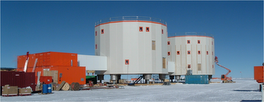Expedition planning #4 - Pinching pennies and time contraction
It has been a while since my last expedition planning post, a rant on the purchasing jigsaw. The reasons are that plans were up in the air for some time, as important variables kept changing. Now things have settled down enough for me to attempt to fill you in.
First off, funding: in a previous post, in which I enthused about the CASE-IPY project being selected for funding, I wrote that we did not as yet know what level that funding would take. We now know that we have been allocated 80% of what we asked for from the ANR (Agence Nationale de la Recherche).
We have been spending the last week or so trying to figure out how to get the project done with a 20% cut in budget. Never have I appreciated more the usefulness of spread-sheets. I had always been skeptical about their real place in science. In my opinion, complex math should be done by writing code, and data should be kept and analysed using proper databases. That left little space for the spreadsheet. However I have been forced to concede that OpenOfficeCalc is the tool of choice when it comes to dealing with budgets.
One week of turning the numbers all possible ways has led us to drop one proposed station out of the eight we were planning to purchase with the ANR money. This allowed us to reduce the logistical cost of the operation a little. We have also had to remove all IT equipment from the budget, as well as all publication costs. We will be walking on a tightrope for the next three years, but at least we can go out there and do this thing!
This summer's campaign is starting to come into focus a little more, now. We had already shipped a case-load of batteries out there, and at the beginning of August we shipped out insulated boxes of our own design, more space-filling insulation, insulation for cables, and of course the solar panels that will be our energy source for the duration of the Antarctic summer. We have shipped enough to set up three test stations. We will be monitoring their performance remotely, and will use the information we get back to improve the station design for the full deployment which will happen next year.
The dates for this summer campaign are now much closer to being confirmed as those I originally posted about. However, the 4 weeks of Concordia time we had asked for have been reduced to 3 weeks, for logistical reasons, so we will have to make more efficient use of our time up there.
Summary of the present situation: we've taken a 20% cut in funding and a 25% cut in field time, but we are still going strong.
-----
Keep up to date with the latest developments at http://sismordia.blogspot.com




No comments:
Post a Comment